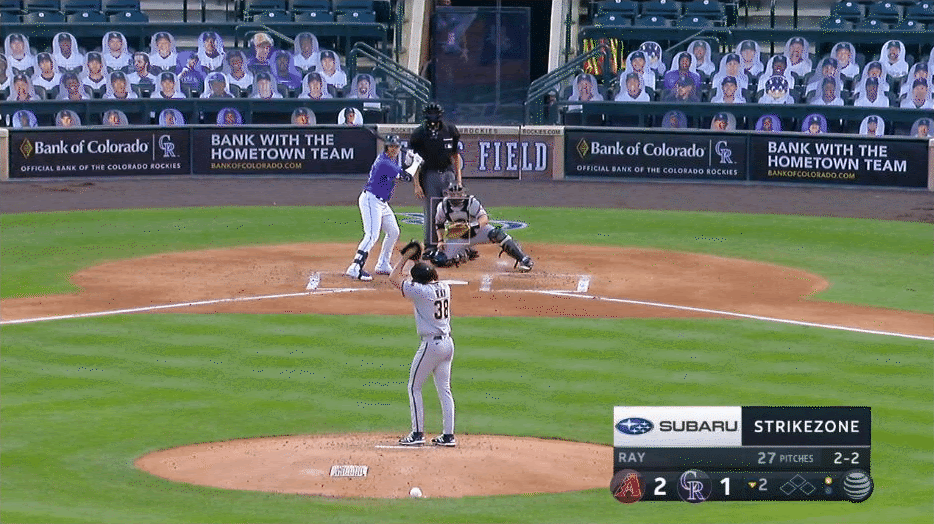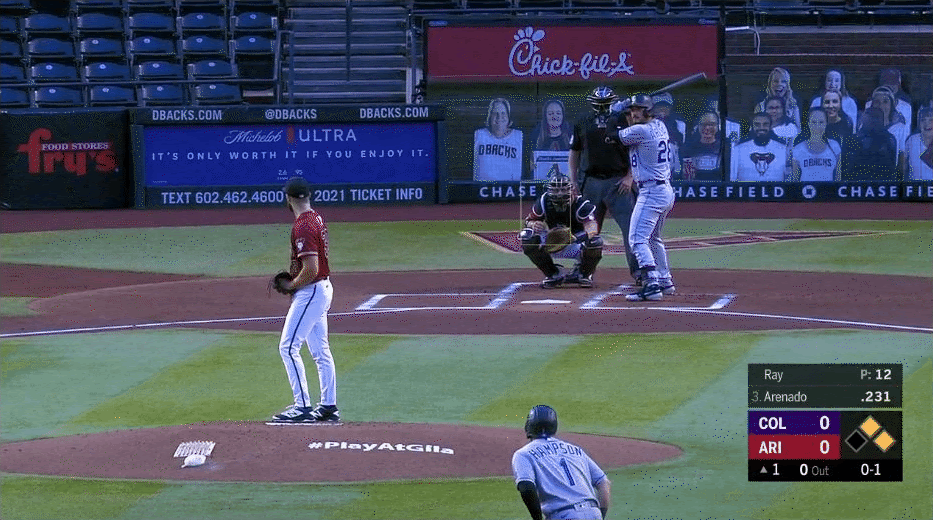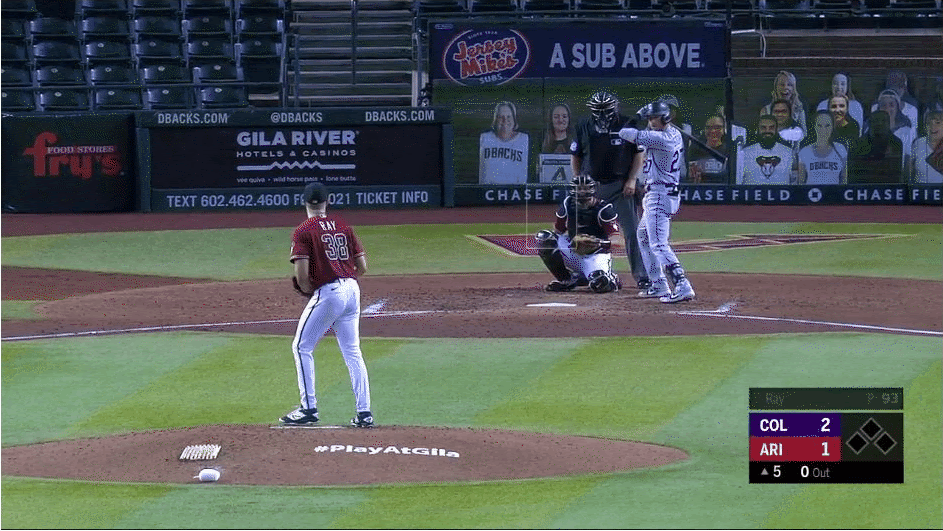When Robbie Ray made his Toronto Blue Jays debut on Tuesday night, it was his first relief appearance since Sept. 27, 2014. He’d come out of the bullpen just six times in his entire professional career prior to the outing, but you wouldn’t have known it from 3.1 innings he gave his new club, with just one earned run against and four strikeouts against a single walk.
The Blue Jays haven’t explicitly stated how they plan to deploy Ray for the rest of the season, but they’ve made it clear they want to get creative with their pitching staff, and the electric southpaw is the perfect guy to think outside the box with — especially as a way to help alleviate the struggles he’s experienced this year.
Ray’s 2020 has been completely off the rails. There’s no way to sugarcoat the 9.00 BB/9 and 7.84 ERA he brought to Toronto. It’s tough to trust him to get you five innings right now. His limited relief experience also makes using him out of the bullpen an untested strategy.
A traditional starting role doesn’t seem to be the best way to use him — which is an idea that’s been floating around prior to his current scuffles. In a piece at FanGraphs last season, Craig Edwards pointed out that the lefty is exceedingly inefficient with his pitches, even during his best seasons, and loses velocity over the course of games. His times through the order splits are also stark.

First time through the order, hitters are approximately as effective as Ezequiel Careera, and third time through they have a virtually-identical OPS to Mookie Betts. That’s quite the contrast. Interestingly, the difference between the first and second time is minimal, meaning that a 3-4 inning bulk role could make some sense. That’s what we saw on Monday.
The idea of Ray as a reliever isn’t just enticing because of his ability to avoid turning the lineup over — his stuff could also take an explosive jump. As a starter, the 28-year-old already has an exciting arsenal. His fastball is well above average in terms of both velocity and spin, and he has two breaking balls that have both forced whiff rates above 40 per cent in each of the last four seasons. Even in the midst of a career-worst season, his K/9 ranks eighth league-wide for pitchers who’ve logged at least 30 innings.
Normally when we talk about possible conversions, we’re dealing with pitchers whose stuff is relatively unimpressive in longer outings. Andrew Miller had a K/9 of 6.92 in the last seasons he started and saw that number climb to 11.38 in his first year as a full-time reliever. Ryan Borucki posted a 6.17 K/9 in his rookie season out of the rotation, so far in 2020 he’s looking at 13.97.
Ray wouldn’t see a jump that dramatic transitioning to relief — in part because it would be borderline mathematically impossible. However, it is safe to say his already-plus stuff would get better. We didn’t see that last night as his fastball sat below his season-long average, but the fact Ray spent the day travelling hasn’t transitioned to a full-time bullpen routine yet could account for that.
A better window into how this could work is his 2014 season when he pitched three relief outings and made six starts. In relief he averaged 94.3 m.p.h. on his fastball, as a starter that number was just 90.8. That’s a massive gap of 3.5 m.p.h.
It’s probably unfair to assume Ray would experience that kind of gain again, but those numbers make it seem more likely that something like a 2-m.p.h. boost isn’t out of the question. If Ray were to manage that, here’s how his velocity would look on his three primary pitches (in relief, his little-used changeup and sinker would likely fall by the wayside).

As a reliever, it’s fair to assume Ray would pump in a fastball with elite velocity to pair with his already-excellent spin rate. His breaking balls would also get significantly sharper.
Often we don’t prioritize velocity when it comes to secondary pitches, but in Ray’s case it’s crucial. That’s because both the southpaw’s slider and curve are unimpressive when it comes to vertical and horizontal movement.

Those numbers look alarming, but these pitches have been exceedingly effective over the years. That’s often come down to their velocity. A comparable on the Blue Jays is Borucki, whose slider has below-average movement both horizontally and vertically, but is devastating because it reaches the upper 80s.
Ray is the same way. Here’s and example of one of his sliders coming in at 88 m.p.h. in a dramatic strikeout of Tony Wolters:

Similarly, here’s a look at a curveball near the top of his range (84.8 m.p.h.) baffling Nolan Arenado at the bottom of the zone.

On the other hand, when the velocity on Ray’s breaking balls goes down they are far looser and less impressive. This 82.8-m.p.h. slider floats in harmlessly, making it an easy take for Trevor Story.

Contrasted with the tight curveball Ray got Arenado, this sub-80-m.p.h. hook that Fernando Tatis Jr. spits on doesn’t look threatening at all:

We still don’t know exactly what the Blue Jays plan is for Ray, but if they want to maximize his value, keeping him in the bullpen — even in a bulk role — seems like a good idea. The southpaw is inefficient with his pitches, and unusually susceptible to the third-time-through-the-order penalty which brings his effectiveness as a starter into question, especially this season.
Not only that, but he has qualities that specifically make him a strong candidate for relief. His fastball has the chance to go from good to great, and his breaking balls are unusually velocity-reliant. That means they could benefit disproportionately from the extra juice pitching in shorter stints can provide.
There may be a way to build Ray back into a consistent starter, but the Blue Jays are short on time, and could find there are better ways to deploy their struggling rental.
[relatedlinks]
